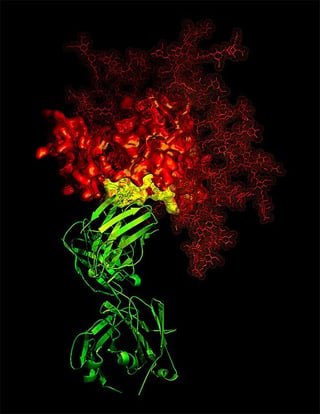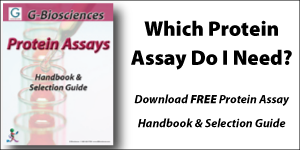
The ability to accurately quantify protein concentration is the key to a successful laboratory workflow, and is often required prior to processing protein samples for isolation, separation, and analysis. To determine the total protein concentration in a sample, one of the first factors to consider is the selection of an appropriate protein assay method. However, since there are a wide variety of protein assays available, you need to take a number of factors (e.g. the accuracy required and the amount and purity of the protein available) into account to make sure that you are using the most suitable assay for your application.
Protein Assay Methods
Traditionally, protein concentration was estimated by measuring absorbance at 280nm (UV range) or by labeling all primary amines (i.e., N-terminus and side-chain of lysine residues) with a colored or fluorescent dye (ninhydrin or o-phthaldialdehyde (OPA). Unfortunately, these approaches have particular disadvantages making them impractical for use with typical protein samples in most proteomics workflows.
To address these limitations, several protein assay techniques have been developed. Basically, protein is added to the reagent to produce a color change proportional to the amount added. The concentration is then determined by reference to a standard curve consisting of known concentrations of a purified reference protein.
Basically, there are three types of protein assay methods – dye binding assays (which bind protein molecules to Coomassie dye under acidic conditions), copper ion based assays (which bind cupric ions with peptide bonds resulting in their reduction to cuprous ions), and test strip based assays (a chromatographic capture method that estimates the amount of protein in the sample). Keep in mind that each assay has its own advantages and limitations, so you need to be very careful in choosing which ones to use.
It may also be necessary to obtain more than one type of protein assay for research applications since there is not one reagent that can be considered to be the ideal or best protein assay method.
Factors to Consider In Selecting an Appropriate Protein Assay
Aside from the nature of the protein of interest, there are several other factors that should be considered when selecting an appropriate assay for your protein sample. Here are some of them:
Interfering Agents
Protein assays based on copper ions cannot be used to estimate protein samples containing reducing agents, metal chelating agents, dyes, amines, and sugars, while dye based protein assays cannot be used for protein solutions containing surfactants (detergents) as doing so will lead to erroneous results. To get the most accurate protein estimate, choose assays that either substantially remove non-protein agents from the protein solutions or use methods that circumvent the interfering effects of non-protein agents present in the protein samples.
Sample Preparation
Prior to analysis, protein samples should be solubilized in an appropriate lysis buffer containing non-interfering agents, or interfering agents must first be removed by dialysis. Alternatively, use a protein assay method that is not affected by the presence of non-protein agents.
Assay Sensitivity and Sample Size
The size of protein samples sacrificed in protein estimation becomes a critical consideration, especially when you are dealing with hard to obtain samples. In such cases, choose a method that requires the lowest amount of protein sample for a reliable estimation.
Dilute Protein Sample
Since most colorimetric protein assays require at least 0.5μg proteins for a reliable estimation, dilute protein solutions would require a larger volume to reach the limit of detection. Since the use of samples greater than 10% of the total assay volume tends to interfere with most assays, choose one that concentrates the samples as a normal course of assay procedure. This way, dilute samples can be assayed without negatively affecting the results.
Time Consideration and Assay Time
The complexity of the sample and the assay method determine the amount of time required to perform a protein assay. Since assays that use standard plots or curves and samples that contain interfering agents can take up a lot of your time, use a protein assay that does not rely on standard plots if you have a limited number of samples for protein estimation.
Protein Standards
While the most reliable protein estimation is performed using a standard that has properties similar to your sample, finding one can be extremely difficult. Thus, the use of readily available proteins (e.g. BSA and gamma globulin) as standards has become widely accepted. However, since most protein assay methods show significant protein-to-protein variation, protein assays independent of the use of protein
standards will show little or no dependency on the choice or the use of protein standards.
Protein-to-Protein Variations
Dye based protein assays show the largest protein-to-protein variation. In some cases, these assays even fail to show protein response since no protein-dye complex is formed.
Instrumentation Requirements
Most protein assays require use of colorimeters or spectrophotometers. Multi-well titer plates are more convenient for high-throughput applications, but please take note that not every protein assay can be adapted to run in titer plates.
Image source: Niaid







